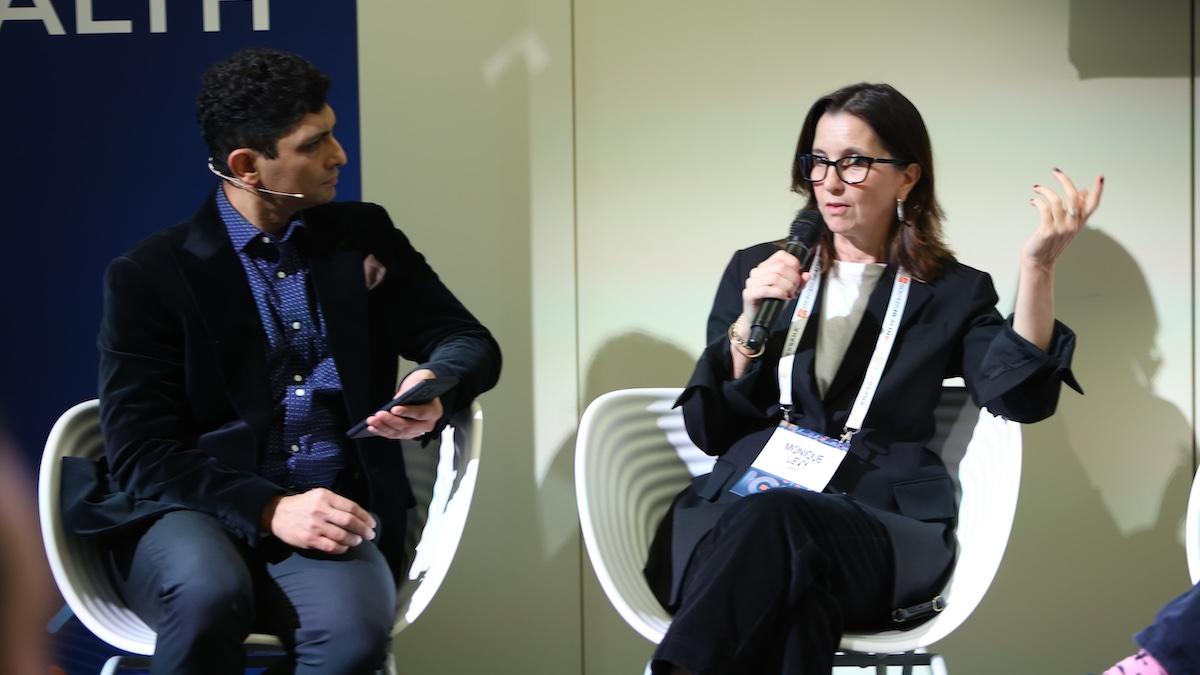Generative Health: A new standard of care

The pervasive impact of generative AI will leave no industry untouched, and healthcare is no outlier. In this incoming technological revolution, it's evident that the ultimate beneficiary is finally going to be the patient.
Artificial intelligence (AI) continues to disrupt industry after industry, demonstrating transformative potential that is hard to overlook. Among the sectors that stand to benefit immensely from AI's prowess is healthcare. In the thick of this incoming technological revolution, it's clear that the patients, the ultimate stakeholders of healthcare, stand at the precipice of a new standard of care – in an era characterised as ‘Generative Health’.
Addressing patient dissatisfaction
Many patients, when asked about their healthcare experiences, express palpable dissatisfaction. They often narrate a litany of exasperating episodes where the system fell short of addressing their needs. This sentiment has persisted, despite relentless endeavours by healthcare executives over the past two decades to situate patients at the core of numerous digital transformations. A significant shift from paper-based records and fax machines to digital platforms and telehealth was undeniably a milestone that fundamentally restructured healthcare processes and information technology management. However, the central objective – a more compassionate, personalised, and seamless patient experience – still remains largely unfulfilled.
The consistent dissatisfaction among patients can be traced back to myriad systemic challenges and inefficiencies that are deeply ingrained within the healthcare industry. These obstacles range from the complexities of regulatory hurdles to the persistence of outdated practices. The patient's journey is riddled with three fundamental issues: (1) inconsistent information, (2) friction in care delivery, and (3) uncertainties about treatment costs and services. It's not uncommon for a patient to receive contrasting information from different health insurance representatives, reiterate their medical history multiple times during a single visit, or receive outdated explanations of benefits documents and unexpected invoices.
Generative AI: A beneficial uniqueness
The pressing question, therefore, is: How is generative AI positioned differently to help? After all, advancements like social media, mobile tech, cloud computing, big data, blockchain, and the metaverse have already made substantial strides, yet the patients' plight continues.
The uniqueness of generative AI lies in its simplicity, swiftness, and cost-effectiveness when it comes to implementation and scalability. This stands in stark contrast to other digital transitions, such as those to mobile, cloud, or blockchain technologies. The adoption process of generative AI is considerably simpler, due to a wealth of open-source resources and capabilities accessible to any organisation. Despite the early lead established by companies like OpenAI and Google, there are no insurmountable barriers preventing a global pharmaceutical manufacturer, for instance, from exploiting the benefits of generative AI.
Moreover, generative AI can be deployed quickly. Given the appropriate architectural framework and parameters, models can be trained overnight and retrained within a matter of hours. While the larger language models (LLMs) might come with a hefty price tag, “micro” language models (MLMs) that are disease specific, for instance, are more accessible, making the scalability hurdle lower. This will undeniably propel substantial adoption, with healthcare being a primary sector. This naturally leads to the next question: What are the significant, impactful use cases in healthcare that could drive substantial improvements in the patient experience?
Generative AI fundamentally redefines the interaction between humans and systems. Consider this: a conversation with ChatGPT feels remarkably more human than engaging with any other system. This “perception of personhood” at the other end of the conversation significantly fortifies the bond between the human user and the system, leading to increased user acceptance and interaction with a system.
Mitigating information inconsistency
Currently, when given the option between a first-generation chatbot found on most websites and dialling a toll-free number, many people would opt for the call. However, when presented with a choice between a generative chatbot and a toll-free number, the balance might tip towards the former. This not only trims costs, but also enhances user experience significantly.
Patients interacting with a generative chatbot are more likely to receive accurate and consistent information compared to those who converse with a human representative via a toll-free number. The latter may succumb to fatigue, make errors, and the quality of their training may vary widely. This leads to a high degree of inconsistency in the information provided, which is a significant factor contributing to patient frustration.
Enhancing care delivery through streamlining
A notable strength of generative AI lies in its ability to learn from and retain vast amounts of data. This attribute can revolutionise the streamlining of care delivery, significantly improving patient experiences and service efficiency.
In traditional systems, patients often find themselves repeating the same information at various stages of their healthcare journey, be it during doctor consultations, lab tests, pharmacy interactions, or insurance claims. This redundancy is not just tedious and time-consuming, but can also lead to errors and inconsistencies.
Generative AI presents an effective solution to this problem. Once a patient's details are learned by the AI system, they need not be repeated, saving valuable time and reducing the risk of miscommunication. The information, once learned, can be used to personalise patient interactions, making healthcare delivery more efficient and patient-centric.
Diminishing uncertainty surrounding treatment cost and services
Generative AI, contrary to popular belief, extends far beyond mere text generation. Its potential lies in its universality: it can generate much more than just words. From elegantly designed websites and documents to imagery, video, music, and even immersive 3D environments - generative AI stands poised to revolutionise the digital landscape.
Take, for instance, an Explanation of Benefits (EOB) document in healthcare, an artefact notorious for its complexity. In its traditional form, an EOB is a static, text-heavy document that often leaves patients confused about their medical costs, coverage, and responsibilities. However, imagine a generative EOB, meticulously personalised to each patient's individual situation. Instead of a dry, difficult-to-navigate document, you're presented with a dynamic, real-time interactive interface. This level of personalisation and interactivity could significantly improve patient experiences by providing clearer explanations of healthcare costs and services.
Embracing the dawn of a new standard of care
The dawn of Generative Health is upon us. It's an era where every interaction is seamless, personalised, and designed to empower individuals on their health journey. Generative AI is pushing us closer to this ideal, a world where patients are no longer lost in the labyrinth of healthcare complexities, but instead are active participants in a system that caters to their needs. As we stand on the cusp of this transformative shift, it's time to reimagine what healthcare can truly be.
This time, it might finally be about the patient.












